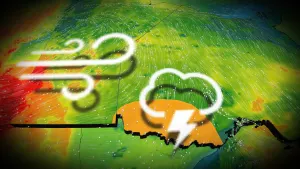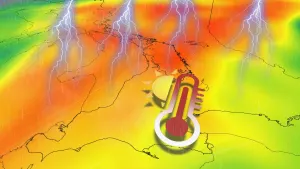
Snowflakes hold clues about much larger weather systems
Understanding snowflakes can help with weather prediction, researchers say.
Atmospheric scientist Tim Garrett from the University of Utah is piecing together the science of snowflake motion in snow showers.
He has dedicated his career to studying snow, and with the help of tools from his university, Garrett and his team have analyzed more than half a million snow crystals.
They found that instead of a complicated formula, predicting how snowflakes move proved surprisingly simple.
Why should we care about how snow crystals move?
“How snowflakes fall has attracted a lot of interest for many decades because it is a critical parameter for predicting weather and climate change,” Garrett says in a statement.
“This is related to the speed of the water cycle. How fast moisture falls out of the sky determines the lifetime of storms.”
The speed at which a snow crystal falls and how it lands holds clues about much larger weather systems, Garrett says.
“Most precipitation starts as snow. [The] question of how fast it falls affects predictions of where on the ground precipitation lands and how long clouds last to reflect radiation to outer space.
It can even affect forecasts of a hurricane trajectory.”
Letters from heaven
Renowned physicist Ukichiro Nakaya called snowflakes “letters from heaven” because their unique and delicate shapes hold information about temperature and humidity changes in the clouds.
Every snowflake is thought to be unique, but Garrett’s team has discovered the way they drift through the air follows a pattern.
To identify this pattern, Garrett set up shop at Alta, a Utah ski resort that was the state’s snowiest destination in the winter of 2020-2021.
Using special instruments that measure air temperature, relative humidity, and turbulence, the team had an unexpected result.
Despite the unique shapes and paths the snow crystals took, the team found they could predict how they would accelerate based on the Stokes number (St) parameter, which explains how quickly particles respond to changes in the surrounding air.
When Garrett’s team looked at how individual snowflakes accelerate, they found the average increased near-linearly with the Stokes number.
And the same math can be used to study how changing snowflake sizes affect how fast they fall.
“That, to me, almost seems mystical,” Garrett says.
“There is something deeper going on in the atmosphere that leads to mathematical simplicity rather than the extraordinary complexity we would expect from looking at complicated snowflake structures swirling chaotically in turbulent air. We have to look at it correctly, and our new instruments enable us to see that.”
Garrett’s study is set to appear in an upcoming issue of the journal Physics of Fluids.
Header image: File photo courtesy of Canva.










